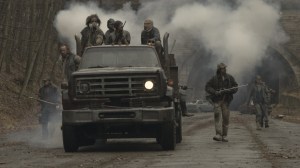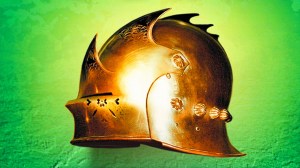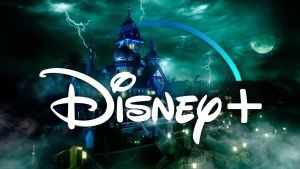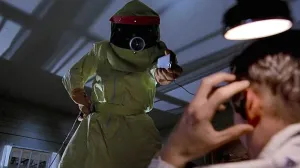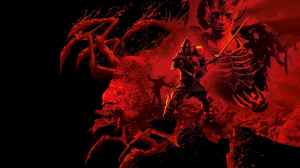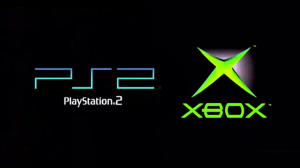DC Comics didn’t start the event comic, but they perfected it with Crisis on Infinite Earths. The twelve issue series by Marv Wolfman and George Perez is a stone-cold classic, ending the DC that fans had read since 1956’s Showcase #4, and bringing DC back to prominence after years of diminishing returns. One can debate on whether Crisis on Infinite Earths fixed anything or whether it made things worse, but it did put DC on the road to several widescale reboots, each one with a varying levels of success. DC has constantly gone back to the Crisis well with their event books, and this has been a problem at times. However, let’s call a spade a spade — Crisis on Infinite Earths is the greatest event comic of all time and it isn’t even close.
Videos by ComicBook.com
There’s something about Crisis that keeps it at the top of the event comic heap. Those twelve issues resonate across forty years, giving readers a story that truly earned being called an event. No other event book, whether at DC or Marvel, has ever matched Crisis for its ambition and action, and it codified multiple tropes of event comics that would become standard in the superhero comic industry. Crisis on Infinite Earths has its problems, but those imperfections are part of its charm.
Crisis on Infinite Earths Is the Event Comic Blueprint

Marvel created the event comic with Marvel Super-Heroes: Contest of Champions and struck first with the inaugural twelve issue event comic with 1984’s Secret Wars. However, Crisis was first to use events to make widescale changes to their publishing line. Right from the first page, with Pariah showing up in Earth-Three and the death of the Crime Syndicate, some of the Justice League’s greatest villains, readers knew that Crisis was going to be very different than what came before. There was a scale to Crisis that no one had ever seen before, and it made Secret Wars (1984) seem almost quaint by comparison.
One of the main reasons for this was planning. Wolfman pitched a major DC continuity-altering event in 1981, while he was editing Green Lantern and had encountered a particularly thorny continuity problem. The book was first pitched as The Histoy of the DC Universe, which would become the name of the series Wolfman and Perez did after Crisis, but the name was changed to the one we all known and love because of the history of the word “crisis” in DC Comics. DC started planning the book not long after the pitch, spending years and hiring a special researcher to help Wolfman, Perez, Dick Giordano, and Jerry Ordway to prepare for the book. All of this paid off, as Crisis always feels like a perfectly constructed story. In today’s day and age of yearly events, publishers just don’t put the kind of work into events comics that they used.
RELATED: 8 Biggest Threats to Superman (And One is Completely Unexpected)
Crisis on Infinite Earths redefined what spectacle could be in a comic. Not only did it combine basically every hero and villain in DC history, it also gave readers sights they had never even imagined. The book’s tag line was, “Worlds will live, worlds will die, and nothing will be same again,” and it fit that. Readers had never seen a villain like the Anti-Monitor. He wasn’t like Thanos, who wanted to destroy one universe. He wanted to destroy every universe, and readers got to see him succeed over and over again, ramping up the stakes of the story. The Anti-Monitor became the blueprint for every major event comic villain ever, and none of them can even approach him. The Anti-Monitor isn’t a deep villain, but he’s a threat that redefined what a comic book villain could be. So many characters died in Crisis, which was another huge change. People always think about Barry Allen and Supergirl when they think about Crisis deaths, but they’re just the popular ones. Comics had never shown the type of wholesale death that they saw in Crisis and it changed the rules for what an event comic could be. Marvel’s ’80s events were bloodless affairs with little bearing on anything. They seemed like products more than anything else. Crisis felt like a story, one with stakes that had never been seen before.
Wolfman and Perez themselves are another reason why the book is great. Wolfman was part of the first generation of fans who had grown up reading comics, and it shows on every page. Wolfman loves superheroes and DC, and he was able to bring that love to life. One can argue with the pacing of the story, but the way the book keeps ramping things up really plays into the epic feel of the book, something that only someone like Wolfman could give it. Perez was the perfect artist for a book like Crisis. Perez is one of those artists who can draw the ultimate version of basically every superhero ever, and is known for his brilliant character designs and detail. Look at the Monitor, Anti-Monitor, Harbinger, Pariah, and Lady Quark. Those are perfect character designs, and no one other than Perez could have made them look that good. Every page is dripping with detail, and Perez is able to sell every moment of the book. The book’s action was amazing and Perez’s ability to cram panels with characters truly helped sell the book’s epic feel. Wolfman and Perez were a perfect writer/artist team, and their work together made Crisis into a book that was unlike anything that came before and after.
Every Other Event Wishes It Was Crisis

Crisis on Infinite Earths had a lot riding on it. Not only did it have to give readers an entertaining story that would take DC into the future, it also had to pay homage to everything that came before it. Crisis was able to stick the landing in a way that few events can, and it did with the weight of the DC Multiverse on its shoulders. Crisis isn’t just a great story to read, it’s one of the most important moments in comics.
Crisis succeeded in a way that no one could have expected. There’s a reason that DC goes back to the Crisis well so often, and yet can never actually match it. Crisis is a one of a kind story in a medium that is all about homogeneity, and that’s a very rare thing. Every event that came after tried to be Crisis to an extent, and yet none of them even got close. There’s a reason the words pre-Crisis and post-Crisis are used to explain DC continuity; it’s because comics were one thing before it came out and it made them into another. Crisis is the best event ever, and that’s really all there is to it.

